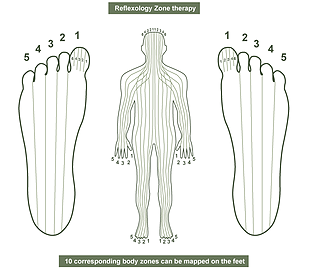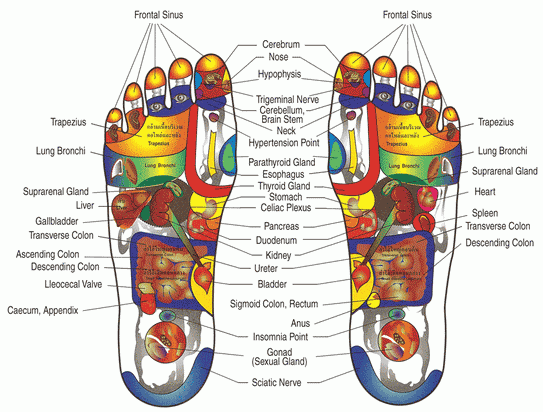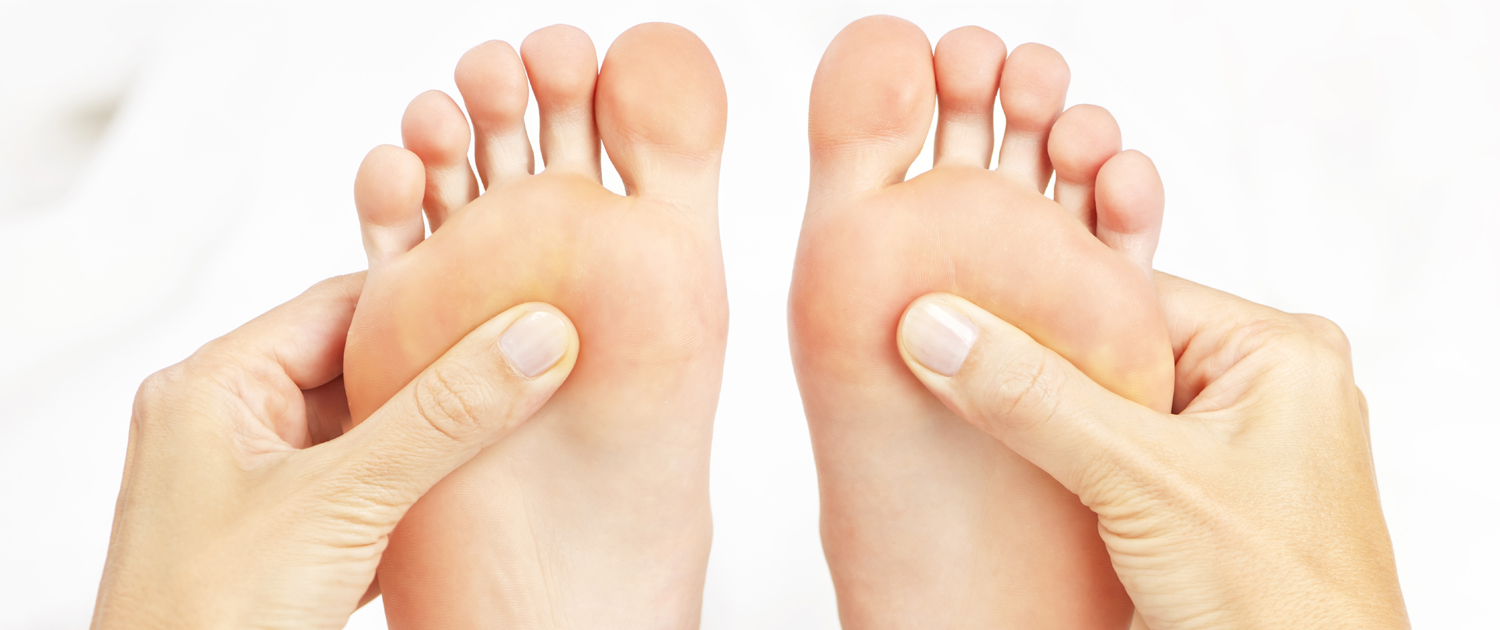Reflexology Zones in the Human Body
The central and key concept in reflexology revolves around the concept and theory of reflexology zones. According to the Zone Theory, there is a relationship that exists between several parts of the body. Four organs, namely, the foot, ear, hand, and face have reflex points that are connected to all the organs, tissues, and systems of the human body.
The zone theory goes on to state that stimulating any of the reflex points will, in turn, stimulate or effect corresponding organs, tissues or system. The real secret in reflexology is knowing which reflex point corresponds to which specific organ(s). Having a thorough understanding of reflexology zones in the human body is the only way to enjoy the full benefits of reflexology.
Reflexology zones
The human body consists of ten longitudinal (vertical) zones that run from top to toe, and lateral (horizontal) zones. Lateral zones mainly use the feet to map the human body. Foot reflex zones are the most commonly used because they have the largest (when compared with the hands and ears) surface area and they can be easily stimulated by applying gentle pressure since they are not far from the skin surface.
Looking at the surface of the feet that faces downwards when a person is standing upright, the human feet can be split into five areas. Each area represents an organ or set of organs that are connected to it.

The first area includes all the toes, toe bones, and joints. This area represents the organs around the head and neck. This area corresponds to the eyes, ears, Eustachian tube, pituitary gland, and hypothalamus.
The second area is at the borderline between the toe and the ball of the foot. It is really a small area as compared to other areas and it corresponds to the spine.
The third area is the ball of the foot, which is the dark and raised area under the toes. This area ends where the surface skin becomes lighter. It represents the chest area.
Next to it is the fourth area and the largest area. This area varies from person to person. It is like the waist of the foot. It is a lightly-colored area of the foot and is the thinnest in width. This area represents the waist line and it corresponds to several organs including the shoulders, kidneys, the pancreas, the colon, and the bladder.

The fifth and final area is the bottom of the feet. This the area where the feet color changes from light to dark. It represents the pelvic area. The organs it corresponds to include the appendix, inguinal lymph nodes, and the anal sphincter.
It must be noted that the right foot corresponds to the organs on the right side of the body, and the same goes for the left-hand side.
The hands can also be used in the same way that the feet are used. The hand can be divided into three distinct areas. The area between the upper fingers and the upper palm area represents the upper part of the body. The area between the palm area maps to the diaphragm and the area between the lower palm area and the wrist represent the waistline. Looking at the inside of the right hand, the following reflex points are used to map to the following organs:
The head is mapped by the thumb while the upper thumb (inside part) corresponds with the side of the head. All the fingers, except the thumb, correspond with the eyes, brain, and sinuses. The head of the thumb also relates to the brain. The lower part of the thumb maps the throat, neck, thyroid, and Parathyroid.
The area below the fingers that goes to the thumb maps to the stomach, heart, pancreas, and the lungs. An area below the four fingers corresponds with the lungs, breast, and chest. A small area below the baby finger or pinky represents the shoulders and arms.
The areas in the middle of the palm represent the liver, gall bladder, adrenal gland, kidney and the stomach. The area below the thumb and on the edge of the hand corresponds with the pancreas, spine, and bladder. The raised area at the bottom of the palm area represents the ureter, small intestines, appendix, ascending colon, and the transverse colon.
The area on the edge of the wrist (on the thumb side) maps to the uterus/prostate. The same area but on the opposite side maps to the ovary/testicle.
Knowing the reflex points and the organs they correspond to is like having a treasure map. It guides a reflexologist in the right direction and allows for a rewarding reflexology therapy.

